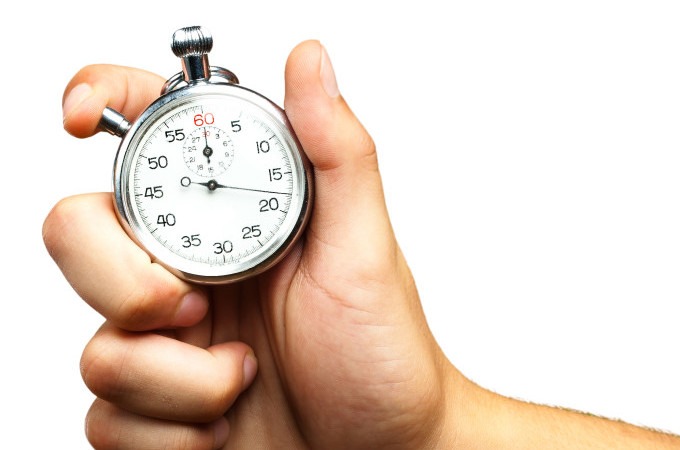Whether you’re an entrepreneur just venturing into the world of new products, or an established business or shop owner with an idea on how to expand your existing product line, the product development process holds the same excitement, opportunity and promise. The product development phase acts as a critical bridge in the manufacturing process between pure brainstorming or ideation, and the production phase of your new product roll-out. In short, product development is where your concept becomes reality.

It should come as no surprise that product development requires a great deal of thought, consideration and decision-making (probably even some tough decision-making). For those new to business and those more experienced alike, there are plenty of challenges that may arise throughout. Some may be expected, and some may be less so. The key to overcoming those surprises is to make sure they’re not a surprise at all: Be prepared and aware of every challenge that might hinder your product development cycle, and have a plan to tackle each one. The following points describe several challenges you may face in product development, and are designed to help set you on a path to overcoming them.
Manufacturability
Prototyping and production differ in numerous ways. From process, to materials, to lead time, the list goes on, and each of these qualities plays a part in the concept of manufacturability. Put simply, manufacturability is the measure of how feasible your product is to be produced on the scale you intend (or if it can be produced at all). Different processes and materials have different strengths and weaknesses, but even more so, the limits of the physical world in general also play a role in manufacturability.
Initial schema or drawings rarely end up being a perfect representation of the product that rolls off the assembly line, and manufacturability is why. Once the idea, general design and functionality of a product are determined, the question of how it will be produced must be addressed. This is where the concept of design for manufacture comes into play. Design for manufacture simply means specing a product in a way that acknowledges and, ideally, takes advantage of the realities of full-scale production. The more emphasis placed on design for manufacture, the better your chances of developing a product with an efficient production process that will ultimately aid your bottom line.
One final note: The limitations and constraints of various materials and processes are not the only things to be wary of. The opportunities presented by some processes are also points to note in manufacturability. For instance, 3D printing offers unparalleled cost-efficiency and versatility in prototyping — but a piece that can be easily 3D printed might be more difficult to produce in a full-scale production run, such as a piece with complicated assemblies or intricate components. Be aware of the strengths and weaknesses of various processes and when is the best time to use each.
Timing
It’s normal to be antsy during product development — you want to get the product to market as soon as possible. Timing issues, if not carefully considered, can cause interruptions, however. These problems can occur across the board — they are issues to be considered both as a part of product development, and also for the physical production of your product.
Let’s go chronologically. During product development, there are a few timing factors at work. In addition to wanting to start producing your product, there is also the chance that competitors might be hard at work developing similar offerings. Time is of the essence for a few reasons:
During product development, prototyping is one of your primary concerns. However, in the wrong hands, prototyping can eat up large amounts of time — for instance, if a shop is building new molds or otherwise inefficient methods of getting a short run done for you. This is where 3D printing shines: With just a CAD drawing or other digital illustration, a 3D printer can produce for you in a few hours or days what might take several weeks — or longer — via another process.
Then, there is the timing issue once you move to full production. It’s important to factor time regarding the “overall cost” of the partner or partners you choose to manufacture your products. If the cheapest option is an ocean away, you may end up investing more in transportation and other costs than you would have closer to home. Be sure to take the long view and weigh all options when researching manufacturing partners.
Need
No matter the size of your shop or business, market research is important. That doesn’t have to mean focus groups or extensive, expensive consultations. It simply means taking a realistic, objective view of your product’s place in the market.
Several considerations are involved with determining the need for your product. Here are some to think about:
- • Existing market: are you building a better mousetrap by improving on an existing concept, or just re-inventing the wheel — crowding the marketplace with an indistinct and thus unnecessary addition?
- • The niche it fills: did you innovate your product to solve a problem that no other product could? How common is this problem? Will other consumers be interested in it?
- • Competition: Who are your competitors in this space? What risks do they and their product lines and resources pose to you? What advantages do you offer?
It’s OK to be creative in determining your place in the market and the need for your product — just remember that your customers will have to agree with you, so be ready to focus on what sets you apart.
Costs
Designing and prototyping your products are one thing, and can be done relatively reasonably. Full-production runs require a much larger investment — resources, raw materials, warehousing, shipping, and personnel, to name just a few. The issue of cost — both upfront/prior to production as well as ongoing — is one that manufacturers and other businesses constantly face.
It’s wise to begin thinking about cost as early in the product development phase as possible. It factors into many of the points we’ve discussed here already — design for manufacture, for example, as well as timing. As detrimental as concerns over cost can be to the creative process, it’s much better for the long-term health of your business to be realistic early, as far as your investment, and the return you expect on it. If the numbers aren’t working out, it’s time for tweaks and adjustments — whether to your product, your process or your business plan.
Legal
Finally, legal research needs to be done during the product development stage. The biggest legal issue to look out for in manufacturing is patent infringement, but there are other issues that may arise, as well. For instance, certain design aspects or even functionalities may be protected by a company under trademark or copyright law. Be sure to conduct due diligence to ensure that your new product won’t come under fire from a competitor or other business at some point.




